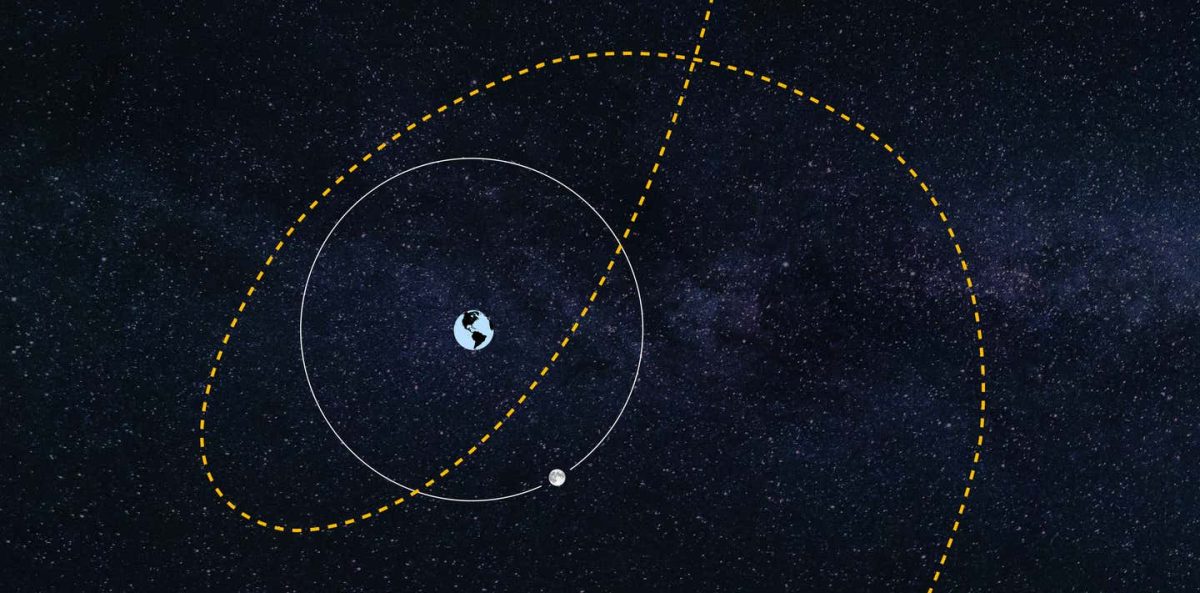On September 29, 2024, an asteroid known as the 2024 PT5 was discovered orbiting Earth. Earth’s gravitational pull has captured the “mini-moon,” causing the second asteroid to orbit planet Earth alongside the moon. This temporary companion is rare, as Earth typically only maintains one natural satellite. The 2024 PT5 will orbit Earth for the next two months before it continues its journey orbiting through various parts of space. The trajectory it will follow once it leaves Earth’s orbit is still under observation, and scientists are eager to see whether its path will bring it near Earth again. The asteroid is made of rock and metal-containing minerals, iron, and nickel, materials commonly found in space and similar to larger asteroids that have previously circled Earth. Mini-moons are often only a few meters wide in diameter, with early research showing that the 2024 PT5 is no exception, as it is slightly larger than typical mini-moons, with its diameter around 33 meters wide.
The 2024 PT5 was first discovered through the tracking of near-Earth objects (NEOs) by astronomers’ optical telescopes and imaging systems, scanning the skies for objects that could enter Earth’s orbit or come close to the planet at all. These systems are part of a global network, including observatories from multiple countries that work together to monitor space debris and potential threats. Astronomers monitor Earth and its surroundings quite frequently to locate asteroids that could impact Earth. Based on its recent movements, scientists have quickly classified the 2024 PT5 as a Temporarily Captured Object (TCO), as while Earth’s gravity caught it, it will escape at the end of November and return to an independent orbit around the Sun. This classification is crucial in understanding the short-term nature of the asteroid’s orbit and differentiates it from other near-Earth objects that may remain close to the planet for longer periods.
This temporary orbit is due to the asteroid coming close enough to Earth for its gravitational pull to overpower the trajectory of the asteroid itself, which is very rare for an asteroid. The vast majority of mini-moons only stay orbiting Earth for a short period, ranging anywhere from as little as a few weeks to as long as a year, before they are sent back into the natural movements of space. In this case, the 2024 PT5 is expected to orbit Earth for about two months from September 29th to November 25th. While it remains in orbit, scientists will be able to track its movements, gather data on its size and composition, and refine models that could predict the behavior of future temporarily captured objects.
Even though the 2024 PT5 is too small to create any noticeable changes for Earth and its atmosphere, the asteroid’s movement will be closely monitored for the next two months to observe any slight deviations that could offer information about its composition and the motions of similar asteroids.
Scientists have speculated whether mini-moons could be future candidates for robotic missions, as they would be ideal testing grounds for future spacecraft missions or other asteroid mining technologies. Developing a deeper understanding of these asteroids could lead to future advancements in space exploration and the overall orbit of asteroids around Earth and the solar system.
The 2024 PT5 is only passing by. However, scientists are taking advantage of this and using the brief time of Earth’s second moon’s orbit to learn more about Earth’s interactions and relationships with nearby planets and other space objects.



